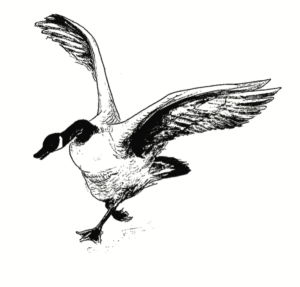Honk! Honk! Honk! Kim’s truck horn alerted Aspen that she was ready to go. She finished slipping her hiking boots on, deciding to tie them in the truck. Kim had texted her early that morning and asked her to be ready to go on a rescue at 9 am. They had received a call. Apparently, there was an injured vulture, in a nearby church parking lot, that couldn’t fly, and Kim needed help corralling it. The truck was loaded with nets, sheets, thick leather gloves, rubber gloves, various tools, and a large dog carrier. Aspen never rescued a vulture before; this would be a first. They were at the church in no time. They circled the parking lot scanning the landscape for the bird but saw nothing, so they parked and walked behind the building, past the small church graveyard, but still saw nothing. This was typical; by the time someone called the hotline for help, and the rescuers arrived, the animal was gone. Luckily as they walked back to the truck, a woman from inside the church came out. “Are you from the wildlife center?” she asked.
“Yes, we are,” replied Kim, “but we can’t seem to find the turkey vulture you called about.”
“Oh, there it is,” she said pointing across the street. Sure enough, there it was.
“A juvenile by the looks of it,” said Kim. It stood about four feet from the road’s edge, just in front of the tree line, slightly smaller than an adult but still a relatively large bird.
Aspen laughed, “We must have driven right by him!” They could instantly tell something was wrong with the vulture’s right wing; it drooped at an odd angle, and it was evident by its actions that it could not y. Kim had Aspen run to the truck and grab several sheets and the leather gloves. Once she got back, Aspen was brought up to speed on the plan. The quicker they captured it, the better, as this meant less stress to the animal. As they crossed the road, the vulture took notice of them and started to hop away. Aspen had to sprint to get ahead of the bird. The bird eyed them suspiciously, then headed straight for the road. Cars slowed, and the occupant’s stared as the bird crossed the road followed by the two cautious rescuers. It trotted up into someone’s front yard and ended up cornering itself against the house, while Aspen and Kim closed in with their sheets. With a last minute sprint, Aspen darted at the bird, knowing if she missed, it might run right past her. She tossed the sheet and when it settled Kim found Aspen with her arms wrapped around the sheet-covered vulture. Carefully, so as not to lose the bird, Kim exposed its head, and it immediately vomited all over Aspen’s shoulder. Instantly the air was filled with the foulest smell, worse than any road kill, rotten eggs, and her dad’s smelly feet com- bined. “What just happened?” she asked, eyeballing the bird.
“Well,” said Kim, “vultures will vomit as a defense mechanism to scare away predators. That must have been his last meal. Looks rather chunky, doesn’t it!” Aspen’s shoulder was covered by the liquidy brown substance filled with chunks of carcass from whatever road kill it ate last. The smell made Aspen gag. She had to look away to keep from vomiting herself. Kim took the bird from her, and Aspen was able to stand and shake the larger chunks off her clothes. She would have to wait until they got back to the center to get cleaned up. Kim tried not to laugh as they walked to the truck. After placing the bird safely in the kennel, Kim put it in the back seat, and they drove back with the windows down!
Once at the center, Kim took the vulture inside the hospital to be admitted while Aspen headed to the back wash pad where dirty cages and kennels of all sizes were stacked waiting for someone to wash them. She grabbed the hose and sprayed the shoulder of her shirt, making sure to point it away from herself, so all the remaining vomit washed down the drain. Then she ran to her room upstairs to put on a clean shirt while imagining her brother’s reaction when she told him the story. Jacked loved all things disgusting and would most likely be upset that she did not keep a sample of vomit for him to examine.
A few minutes later Aspen entered the hospital and met back up with Kim, who had just finished admitting the vulture with Dusty, the animal care supervisor. They would let it relax a bit before they examined it. In the meantime, Aspen jumped in helping the staff feed the baby birds. Every day people brought animals to the center; some were injured, some were orphaned, and others were kidnapped. One of the center’s missions was to teach people when to intervene and when not to. Many people were taught not to touch baby birds. It was believed that the human smell on them would cause their parents to reject them. However, birds have a poor sense of smell, and the center had great success at re-nesting baby birds. Unfortunately, not every bird could be re-nested, so they had an entire room full of baby birds of various ages that were fed from sunrise to sunset. Aspen’s favorite birds to feed were mockingbirds, blue jays, and robins because they opened their mouths extremely wide and begged for food so well. She moved from cage to cage feeding the birds the proper food based on their species. Some got mealworms that squiggled and squirmed in the tweezers as she placed them in the bird’s open mouth; others got fruit, while still others got different types of food. This was how Aspen spent the rest of her day, exhausted by the time night shift showed up to relieve them.


